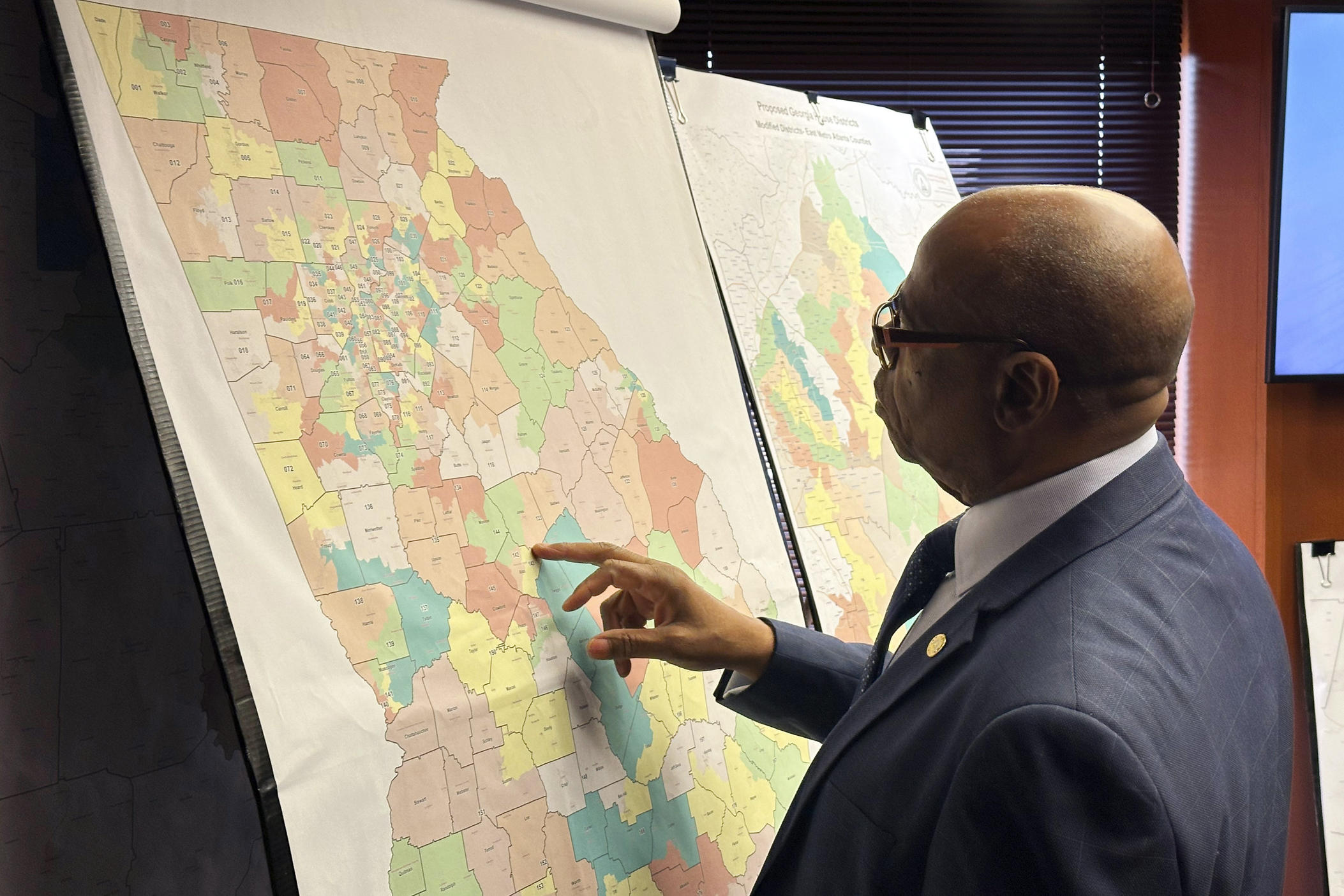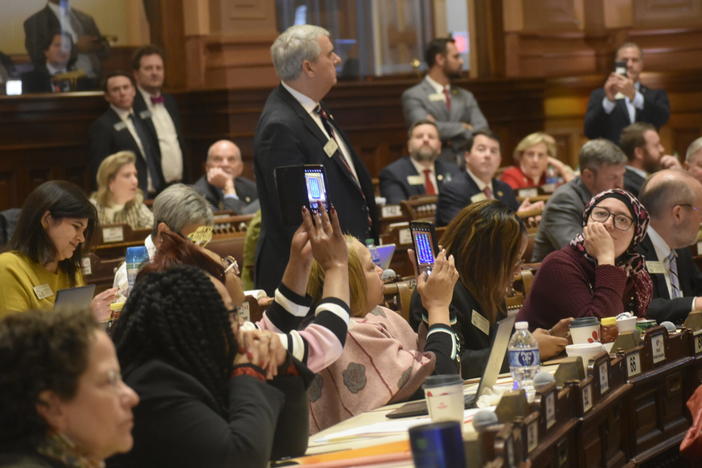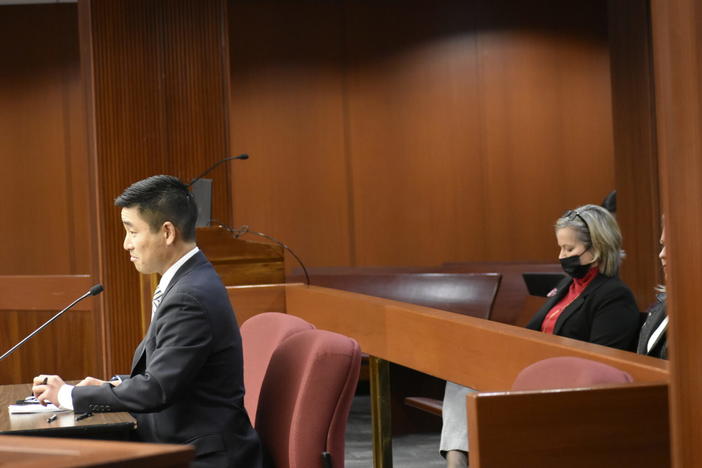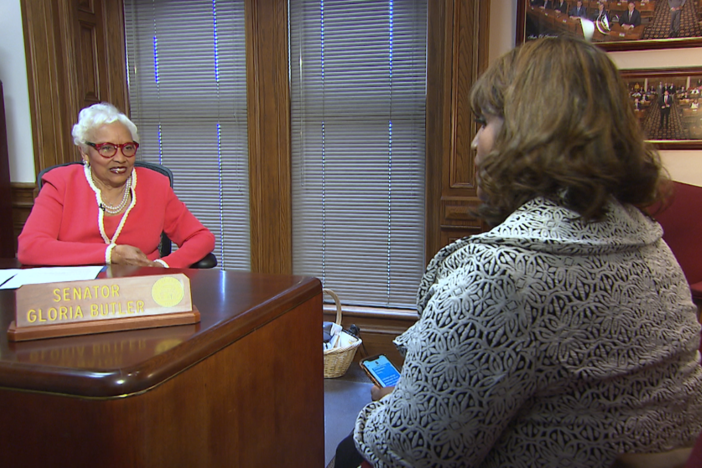GPB Remote Media
Section Branding
Header Content
Here are the proposed redistricting maps for Georgia's special session
Primary Content
Georgia lawmakers are currently in a special legislative session to redraw some of the state's political boundaries to comply with a judge's order to add more majority-Black districts.
Federal Judge Steve Jones ruled in October that the state House, Senate and U.S. House maps approved during the 2021 special legislative session violated the Voting Rights Act by discriminating against Black voters. He ordered the creation of one additional majority-Black Congressional District in Atlanta's western suburbs, two state Senate districts in Atlanta's southern suburbs and five House districts surrounding Atlanta and Macon.
During the 2010s, Georgia's population rapidly expanded, driven primarily by an influx of younger and more diverse voters to the metro Atlanta area. During the most recent redistricting process in 2021, the approved boundaries did add more districts to the metro region in the state House and Senate, but several groups challenged the maps in court arguing the changes were not enough and not done in a way that reflects parity for Black residents compared to their population.
So far, all state legislative proposals released by the Republican majority and Democratic minority in both chambers do create those new districts, but differ on whether those changes should alter the overall partisan balance of the legislature. That's because Georgia has several majority-white districts represented by Democrats, and gerrymandering based on party — not race — is legal.
Here are links to the proposals so far for each map and the changes they would make:
State Senate (33 Republicans, 23 Democrats)
The federal judge's ruling found 10 of 56 state Senate districts violate the Voting Rights Act by either consolidating Black voters into a smaller handful of districts or spreading them across too many to have meaningful power. The order specifically contemplates example districts drawn by plaintiffs suing over the maps and found that two additional majority-Black districts could be drawn in Atlanta's southern suburbs.
The Senate GOP map accomplishes that by changing the contours of two majority-white districts held by Democrats — the north Atlanta 6th district of Sen. Jason Esteves and the Decatur-based 42nd district of Sen. Elena Parent — and redrawing boundaries of several other districts to have two "new" majority-Black districts based in Douglas and Henry counties but keeping all incumbents intact.
This proposal also takes the numbers of the 6th and 42nd districts and gives them to Sen. Matt Brass (R-Newnan) and Sen. Brian Strickland (R-McDonough), making their politically and demographically shifting seats safer for Republicans. An analysis of the map finds virtually no competitive general election districts for either party.
Click this link for an interactive map of the GOP proposed state Senate districts.
Democrats in the Senate unveiled a map that also adds two new majority-Black districts south of Atlanta, but did so by redrawing the boundaries of Strickland's District 17 and Sen. Marty Harbin (R-Tyrone)'s District 16 to include more Black voters that would also make them likely to elect Democrats. Apart from those two state senators, all other incumbents would be in safe, largely non-competitive districts.
Click this link for an interactive map of the Democrats' proposed state Senate districts.
State House (102 Republicans, 78 Democrats)
The federal judge's order found 11 of Georgia's 180 House districts violate the Voting Rights Act by either consolidating Black voters into a smaller handful of districts or spreading them across too many to have meaningful power. The order specifically contemplates example districts drawn by plaintiffs suing over the maps and found that one additional majority-Black district could be drawn in Atlanta's western suburbs, two in its southern suburbs and two around Macon.
The House GOP map accomplishes that by changing the contours of four majority-white districts held by Democrats – Rep. Doug Stoner's Smyrna-based District 40, Rep. Scott Holcomb's north DeKalb-based District 81, Rep. Mary Margaret Oliver's Decatur-based District 82 and Rep. Greg Kennard's Lawrenceville-based District 101 – to create one additional Black district in Douglas County, two districts in Henry County and two in Bibb County.
Digging into the map, the Republican proposal would only add two Democratic-leaning districts through a series of other district boundary changes that would pair together three sets of Democrats, one set of Republicans and redraws an existing Republican lawmaker in Milledgeville into a majority-Black Democrat-heavy seat.
To create a new Black district based in Douglasville, the GOP map dismantles Stoner's district in Smyrna and pairs him with Rep. Teri Anulewicz and redraws Villa Rica Republican Rep. Kimberly New into a safe district.
A new Black-majority version of District 74 based in Hampton comes from Griffin Republican Rep. Karen Mathiak's district, but Mathiak would be drawn into a District 82 that comes from a series of shifts in DeKalb County boundaries that sees Rep. Becky Evans paired with fellow Rep. Saira Draper instead of targeting Oliver.
District 117's majority Black population comes by redrawing Locust Grove Republican Rep. Lauren Daniel into a majority white conservative part of Henry County in new District 81. Holcomb's 81 becomes District 101 and stretches across northern DeKalb County, while current District 101 Rep. Kennard is drawn in with fellow Rep. Sam Park.
In Middle Georgia, Musella Republican Rep. Robert Dickey would see his District 145 become an open majority-Black seat that includes part of Macon and Forsyth, while he would represent District 134. Republican Rep. David Knight in Griffin would go from District 134 to being paired with Republican Rep. Beth Camp of Concord in District 135.
Finally, by swapping district numbers from 133 to 149, Milledgeville Republican Ken Vance would also see his district become majority-Black and majority Democrat.
With five new Black districts likely to elect Democrats but three pairs of Democratic incumbents squaring off means the party would likely to only grow the margin by two votes.
Click this link for an interactive map of the GOP proposed state House districts.
House Democrats introduced a proposal that would add four majority-Black districts and one plurality-Black district in the areas mentioned in the judge's order, but did so by pairing two sets of Republican incumbents and drawing three Republicans into new Democratic-leaning districts.
This potential map would see New in Douglas County, Daniel in Henry County and Rep. Danny Mathis in Bleckley County near Macon have new boundaries that are majority Democratic. The Democratic caucus maps would pair Mathiak and Knight in Griffin and draw Republican Rep. Dale Washburn in northern Bibb County into Camp's Pike County district.
Click this link for an interactive map of the Democrats' proposed state House districts.
U.S. House (9 Republicans, 5 Democrats)
Currently, Georgia's congressional districts are represented by nine Republicans and five Democrats. The judge's order calls for a new majority-Black district based in Atlanta's western suburbs, centered around Cobb, Douglas and South Fulton counties. In the 2021 redistricting special session, Republicans reshaped two competitive districts in Atlanta's suburbs represented by Democrats and redrew them into one solid Democratic seat and one solid Republican seat.
On Friday, Dec. 1, the Senate Republican-led proposal for the Congressional districts was released, which largely rearranges the metro Atlanta area to net two additional majority-Black districts under the definition used by the court but keeps the same number of majority-minority districts at five. The GOP map would preserve the 9-5 partisan split by matching the creation of the majority-Black 6th district in Douglas, Cobb and Fulton with the creation of a new deep red 7th district that runs from Sandy Springs into the north Georgia mountains.
The new map has four districts where at least 50% of the voting age population is "any part" Black, meaning Census respondents who are either Black alone or in combination with another race category, with the proposed 5th and 6th districts joining the 4th and 13th with that distinction. Five districts were majority-nonwhite in 2021: the 2nd, 4th, 5th, 7th and 13th. The new map also has five: the 2nd, 4th, 5th ,6th and 13th.
Republican mapmakers created the new majority-Black 6th district by taking most of the existing 13th district, represented by Democrat David Scott, and adding in more of Fulton and Cobb voters while keeping the Clayton and Henry voters in the new 13th district. That 13th district also includes Rockdale and part of Newton counties, which are in the old 4th district of Democrat Hank Johnson.
The 4th district would lose some voters to the neighboring 5th district of Democrat Nikema Williams while taking part of Gwinnett County that lies in the current 7th district represented by Democrat Lucy McBath. The rest of the old 7th district would be split between the 13th district or two GOP-held districts to the north and east.
Republicans' proposed new 7th district would largely follow the contours of the current 6th district held by Republican Rich McCormick but stretch up to Lumpkin County.
Click this link for an interactive map of the GOP proposed U.S. House districts.
Secondary Content
Bottom Content





